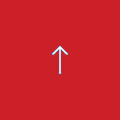Spray printed fabric is a general term for the fabric used in spray painting, which includes lightbox fabric. Lightbox fabric belongs to a type of spray printed fabric and is used for lightboxes. Lightbox fabric includes: front light fabric and back light fabric. Back light fabric is also a type of lightbox fabric.
Backlit textiles are engineered to have light-diffusing properties, allowing them to evenly distribute and transmit light from behind the fabric. They are typically made from polyester or a blend of polyester and other fibers, such as cotton or nylon. The fabric is specially coated or treated to enhance its light diffusion capabilities.
One of the key features of backlit textiles is their ability to enhance the visual impact of printed graphics when illuminated. When combined with an appropriate light source, such as LED panels or fluorescent tubes, the advertising fabric evenly distributes the light, creating vibrant and eye-catching visuals. This makes backlit textiles an ideal choice for applications where the graphics or text need to be illuminated from behind to grab attention and convey information effectively.
Backlit textiles offer several advantages over other materials commonly used for backlit applications, such as rigid panels or films. They are lightweight, flexible, and easy to handle, allowing for easy transportation and installation. They can be easily folded, rolled, or stretched, enabling the creation of seamless and large-scale backlit displays. Additionally, backlit textiles are often resistant to weather conditions, making them suitable for both indoor and outdoor use.
Backlit textiles offer versatility in terms of printing compatibility, accommodating various types of printers and inks. These fabric advertisement textiles can be used with printers that support Latex, Dye-sub Transfer, Dye-sub Direct, and UV inks. For Latex printing, printers equipped with Latex technology provide vibrant and durable prints on backlit textiles. Dye-sub Transfer printers utilize a heat transfer process to infuse dyes into the fabric, ensuring excellent color reproduction. Dye-sub Direct printers enable direct printing onto the textile, simplifying the production process. UV printers, on the other hand, offer the flexibility to print directly on the backlit textile, providing high-quality and instant-curing prints. Whether it's Latex, Dye-sub, or UV, backlit textiles cater to a range of printing technologies for impressive and illuminated graphics.
JC Media,
Devoting to Your Advertising Need




